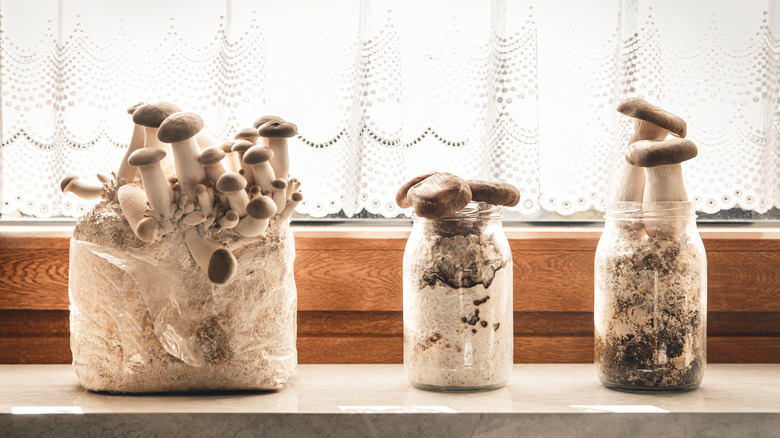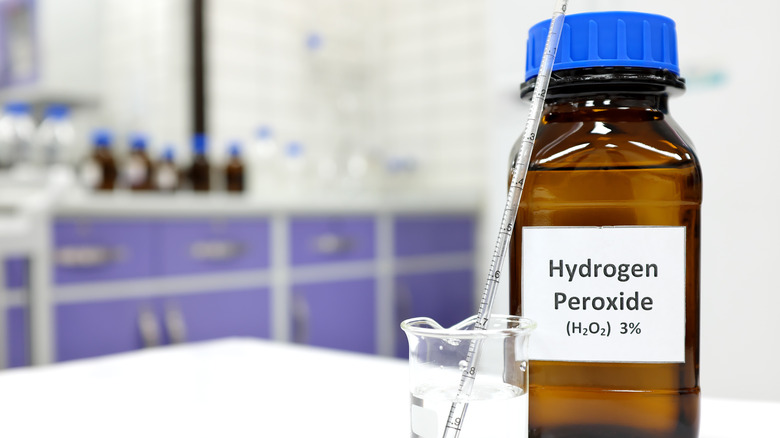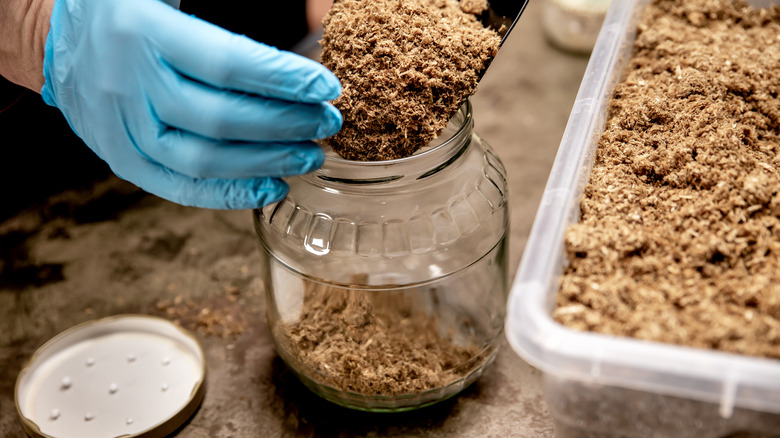Growing Mushrooms With Hydrogen Peroxide: Good Or Bad Idea?
We may receive a commission on purchases made from links.
There are few prouder or more exciting moments for the passionate indoor gardener than watching oyster mushrooms or shiitakes pop out of a container full of straw or carefully inoculated log. It seems almost unreal that you can replicate a process so earthy and ... wild in the comfort of your own home. Mushrooms seem to sprout spontaneously from tree trunks or rotting leaf litter in the forest, and your squeaky clean kitchen counter is the antithesis of those conditions. But it works surprisingly well, so long as you have the right supplies, equipment, and a secret ingredient that will help you grow mushrooms at home – 3% hydrogen peroxide.
Hydrogen peroxide is an excellent addition to your mushroom-cultivating toolbox. The use of H2O2 is what made growing mushrooms outside a clean room possible. That's why many ready-to-grow home mushroom kits are on the market today; these kits regularly feature hydrogen peroxide on the ingredients list. It's used to sterilize the substrates on which the mushrooms flourish. During the growing period, you can use diluted hydrogen peroxide to stop minor bouts of surface contamination in its tracks, and a spritz of the solution increases the shelf life of harvested fungi. In fact, mushrooms, or more accurately, mycelium, naturally produce H2O2; it's one way the organisms ward off pathogens.
Mushroom magic
While most microorganisms — bacteria, viruses, and molds — are killed by hydrogen peroxide, it turns out mushroom mycelium resist its sterilizing qualities. Mushroom mycelium needs to colonize a substrate. In nature, this is a fallen branch or a damp patch of humus, where a balanced ecosystem prevents disease. One of the mistakes everyone makes when growing mushrooms at home is forgetting to sterilize (also called pasteurizing) your medium — be it wood chips, straw, or coffee grounds. Soaking it in hydrogen peroxide before inoculating it with the mushroom spawn (baby mycelium) is a legitimate, expert-approved way to do this. Graduates of DIY kit mushroom growing may want to cultivate their own spawn, and hydrogen peroxide effectively sterilizes the agar mushroom spores flourish on.
H2O2 also keeps growing mushrooms healthy. A 2006 Journal of Food Science paper found that watering growing mushrooms with hydrogen peroxide (mixed with calcium chloride) "reduced the bacterial populations by 87%." Spraying diluted hydrogen peroxide onto your mushrooms controls early infestations of cobweb mold to black bread mold. The same spray can help extend the shelf life and preserve the color and crispiness of your mushrooms after harvest. Using H2O2 in your fungi growing efforts isn't all a lawn of fairy rings, however. It's unlikely to prevent mushroom-ruining bacterial blotch (Pseudomonas); it's corrosive and could damage nearby equipment; and some experts consider it the most expensive substrate sterilization option.
Using H2O2
Whether you want to use hydrogen peroxide to sterilize your growing medium or make an anti-bacterial spray for the mushrooms, you need to get H2O2 in the right concentrations. This varies depending on who's providing the instructions, but typically, anywhere between 3% and 10% is safe. You can buy a 1-gallon bottle of food-grade 3% hydrogen peroxide for $17.99 from Amazon. If you don't need so much, Walmart has a 32-fluid-ounce bottle of Equate 3% hydrogen peroxide for $1.06. Lab Alley sells 1 gallon of lab-grade 3% hydrogen peroxide for $38.00 for a one-time purchase.
To pasteurize or sterilize a substrate, first, dilute your 3% H2O2 solution in water to a 1:10 ratio. An alternative ratio is 34 fluid ounces of 3% H2O2 to 1 gallon of water. Soak the substrate in this solution overnight (12 to 24 hours), a process called cool pasteurization, drain it (a sieve works great for this), and innoculate it with spawn right away. Use the same 10:1 ratio solution to clean the containers that house your substrate, or add it to a spray bottle to gently hydrate the substrate as your mushrooms grow and treat any mold that appears. A bonus for green-focused growers: H2O2 is environmentally friendly, degrading to just water, carbon dioxide, and oxygen.


